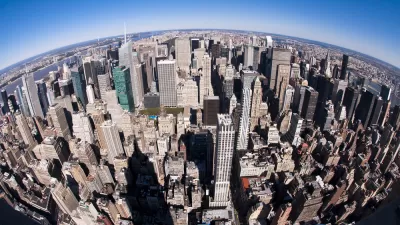Respected consulting firm McKinsey & Company offers a detailed report on the steps city leaders around the world take to transform their cities into great places to live and work.

"Whatever their starting positions, cities can change. Singapore’s rise from a colonial harbor to a world-class city in just a few decades and New York’s turnaround from the economic decline of the late 1960s and ’70s are just two examples. The wide range of measures city leaders in our research used to drive change makes it hard to assess the impact of each measure quantitatively. Yet some common themes emerge."
According to this newly-released, 45-page report by the consulting firm McKinsey & Company, there are three key themes that urbanized cities must address to become successful cities. Leaders who make improving their cities do three things well.
- They achieve smart growth. Smart growth identifies and nurtures the very best opportunities for growth, plans ways to cope with its demands, integrates environmental thinking, and ensures that all citizens enjoy a city’s prosperity.
- They do more with less. Great cities secure all revenues due, explore investment partnerships, embrace technology, make organizational changes that eliminate overlapping roles, and manage expenses.
- They win support for change. Change is not easy, and its momentum can even attract opposition.
The report reviews each of these three major themes in details and provide examples from international cities. For example, the authors provide the following example from New York City in the theme, "Do more with less":
"Smart technology also means data from different government sources can be combined and analyzed to reveal valuable insights. Several leading cities are creating teams whose purpose is to do exactly this. In New York, the analysis of reports of clogged catchbasinsalongwithdatashowingwhich nearby restaurants had not reported using licensed waste haulers suggested which ones
might be illegally dumping grease down the drain. Inspectors then targeted the likely suspects (and gave them information about biodiesel companies that would pay to collect the used oil). As a result, inspectors identified illegal dumping in 95 percent of site visits. Similarly, cross-departmental data analysis found ways to improve the efficiency of building inspectors and so reduce the risk of fire in so-called illegal conversions (buildings housing more people than legally permitted). By combining data about neighborhood economic conditions, the age of a building, whether the building was under foreclosure, and complaints made by neighbors, inspectors were able to detect major safety problems in 80 percent of their site visits, compared with 13 percent previously."
McKinsey also produced a video summarizing the report.
FULL STORY: How to make a city great

Study: Maui’s Plan to Convert Vacation Rentals to Long-Term Housing Could Cause Nearly $1 Billion Economic Loss
The plan would reduce visitor accommodation by 25,% resulting in 1,900 jobs lost.

North Texas Transit Leaders Tout Benefits of TOD for Growing Region
At a summit focused on transit-oriented development, policymakers discussed how North Texas’ expanded light rail system can serve as a tool for economic growth.

Why Should We Subsidize Public Transportation?
Many public transit agencies face financial stress due to rising costs, declining fare revenue, and declining subsidies. Transit advocates must provide a strong business case for increasing public transit funding.

How to Make US Trains Faster
Changes to boarding platforms and a switch to electric trains could improve U.S. passenger rail service without the added cost of high-speed rail.

Columbia’s Revitalized ‘Loop’ Is a Hub for Local Entrepreneurs
A focus on small businesses is helping a commercial corridor in Columbia, Missouri thrive.

Invasive Insect Threatens Minnesota’s Ash Forests
The Emerald Ash Borer is a rapidly spreading invasive pest threatening Minnesota’s ash trees, and homeowners are encouraged to plant diverse replacement species, avoid moving ash firewood, and monitor for signs of infestation.
Urban Design for Planners 1: Software Tools
This six-course series explores essential urban design concepts using open source software and equips planners with the tools they need to participate fully in the urban design process.
Planning for Universal Design
Learn the tools for implementing Universal Design in planning regulations.
City of Santa Clarita
Ascent Environmental
Institute for Housing and Urban Development Studies (IHS)
City of Grandview
Harvard GSD Executive Education
Toledo-Lucas County Plan Commissions
Salt Lake City
NYU Wagner Graduate School of Public Service



























